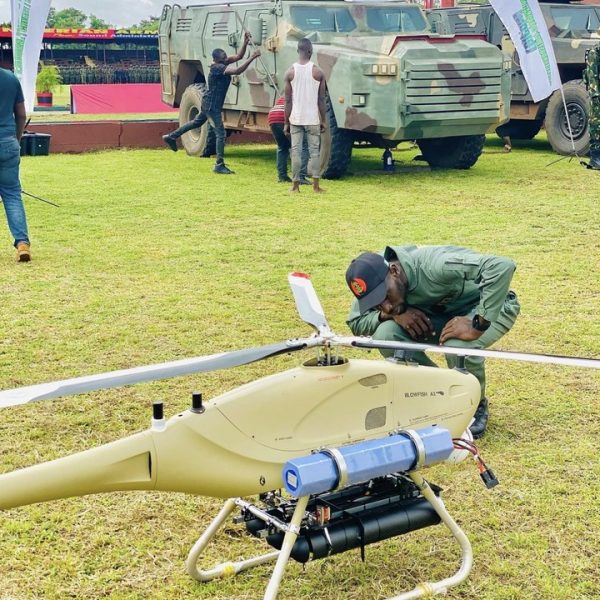The Nigerian Army has taken delivery of the Chinese-made Ziyan UAS Blowfish, a miniature unmanned aerial vehicle (UAV) that is designed for intelligence, surveillance, and reconnaissance (ISR) missions. The Blowfish was recently showcased by the NA Command Engineering Depot (CED) at the just concluded Nigerian Army Day Celebration 2023.
The Ziyan UAS Blowfish, manufactured by the Chinese defense technology company Ziyan UAV, is a highly versatile unmanned aerial vehicle designed for a wide range of military applications.
The Blowfish is a small, lightweight UAV that can be easily transported and deployed. It has a range of up to 100 kilometers and can stay in the air for up to 6 hours. The UAV is equipped with a variety of sensors, including a high-resolution camera, an infrared camera, and a laser range finder.
The Nigerian Army has been using UAVs for a number of years, but the Blowfish is another Chinese-made UAV to be operated by the military. The UAV is expected to be used for a variety of ISR missions, including monitoring the activities of terrorist groups, tracking illegal arms shipments, and providing early warning of potential attacks.
The addition of the Blowfish to the Nigerian Army’s UAV fleet is a significant boost to the military’s capabilities. The UAV’s small size and long range make it ideal for operating in difficult terrain and in areas where there is a high risk of detection. The UAV’s sensors will also provide the military with valuable intelligence that can be used to plan and execute operations.
The deployment of the Blowfish is a sign of the Nigerian Army’s commitment to modernizing its equipment. The UAV is a versatile and capable platform that will be a valuable asset to the military.
This Chinese-made drone provides the NA with a range of strategic advantages, including enhanced surveillance, reconnaissance, target acquisition, and force protection capabilities. As the Nigerian military continues to modernize and adapt to evolving security challenges, the Ziyan UAS Blowfish will undoubtedly prove to be an invaluable asset in maintaining peace, protecting borders, and countering threats to national security.
The Ziyan UAV is small and lightweight, easy to transport and deploy. It has a range of up to 100 kilometers, and Endurance of up to 6 hours.
It is equipped with high-resolution camera, infrared camera, and laser range finder, and is ideal for ISR missions in difficult terrain and areas where there is a high risk of detection.
Potential Applications of the Ziyan UAS Blowfish
The potential application of the Ziyan Blowfish UAV is monitoring the activities of terrorist groups, tracking illegal arms shipments, providing early warning of potential attacks, conducting reconnaissance missions, evaluating damage after an attack, and supporting ground troops in combat operations.
Recently, the Nigerian Army took delivery of three Aerosonde 4.7 Fixed Wing UAS from AAI Corp., a subsidiary of Textron Systems.
The contract for the three Aerosonde VTOL drones was signed on May 8, 2020, between Nigeria, the Pentagon, and Textron Systems.
The Nigerian Army is gearing up to be a major operator of fixed-wing aerial assets, despite the role being primarily domiciled within the domain of the air force. The Army in the year 2020 established its own UAV Command under a new ORBAT 2016 (Order of Battle). The command will deliver responsive, persistent and precise UAV capabilities to achieve the NA’s mission. Also, the new UAV command will raise, train and sustain a UAV force which will ensure task competency to deliver precise and timely Air Imagery Intelligence.
For now, it is not yet certain if the new Nigerian Army UAV command will operate alongside the Nigerian Air Force Combat Reconnaissance Group (203 CRG) in Gombe state. The Nigerian Army has been known to operate several commercial-grade drones sourced from the civilian market.
